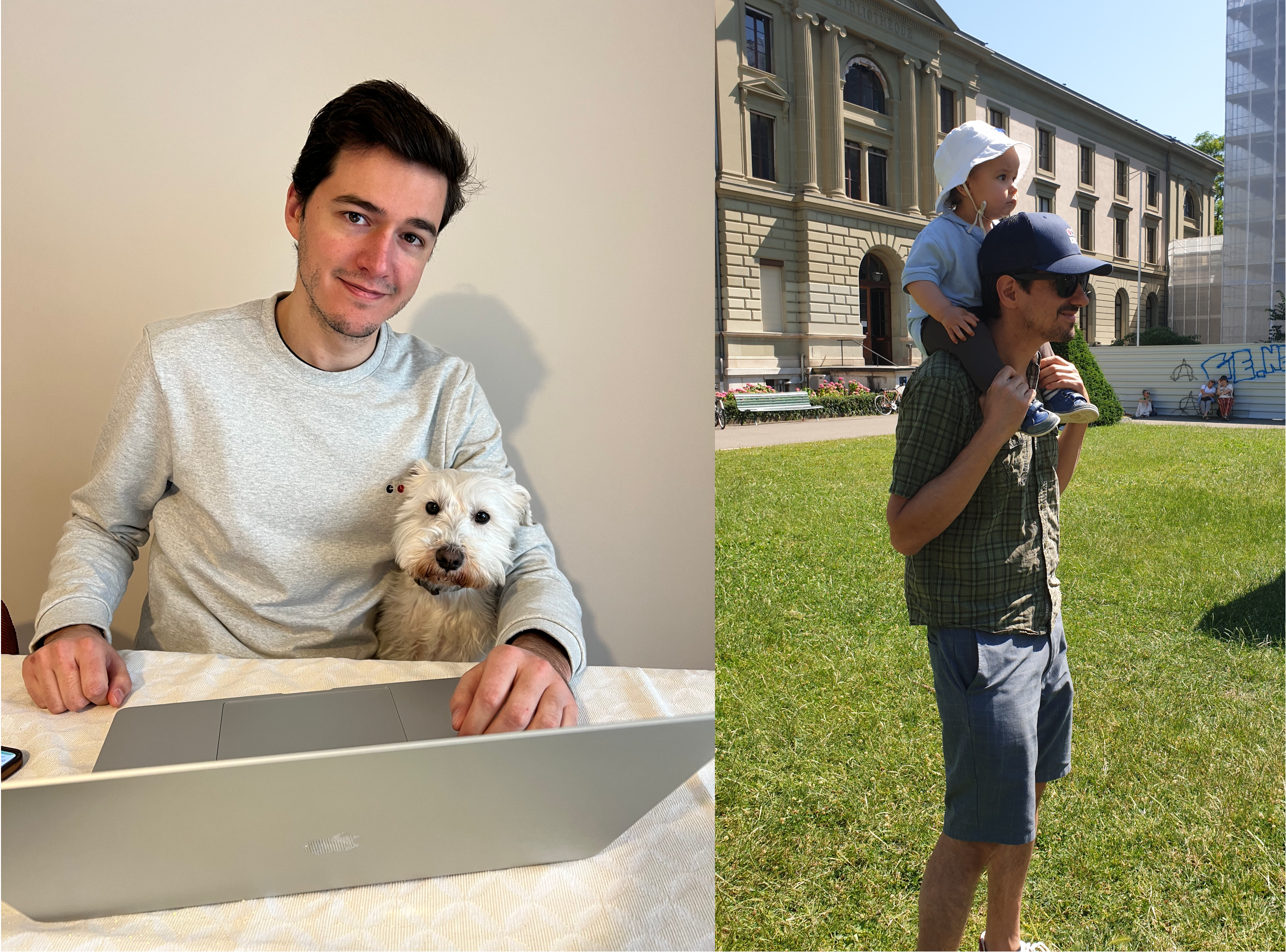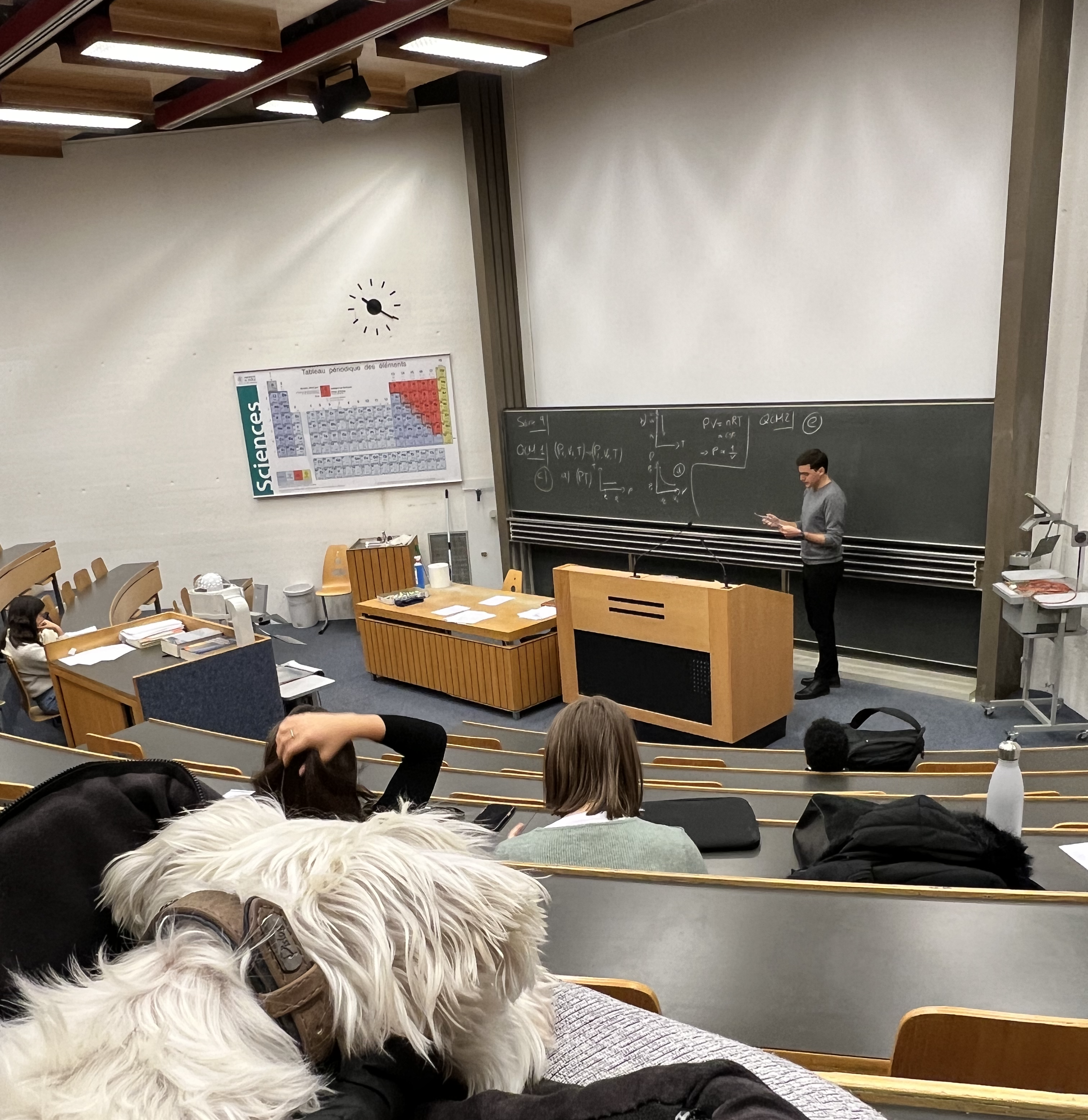By Mathieu Boudreau

This MRM Highlights Pick interview is with Julien Songeon and Antoine Klauser, researchers at the University of Geneva in Switzerland. Their paper entitled “In vivo magnetic resonance 31 P-Spectral Analysis With Neural Networks: 31P-SPAWNN” was chosen as this month’s Highlights pick because they shared the source code for their proposed method (simulations, their deep learning network, and sample datasets).
MRMH: Tell us a little bit about yourselves.
Julien: I grew up in France, but did my undergraduate degree in physics at the University of Geneva. I then specialized in high energy physics for my master’s degree, and am currently focusing on applied physics for my PhD, which I’m defending soon. My thesis focuses on phosphorus magnetic resonance spectroscopy.
Antoine: I followed a similar trajectory to Julien, actually. We’re both products of the same physics department at the University of Geneva, but I did my master’s in condensed matter physics. I then went to the Netherlands, where I did my PhD thesis in very fundamental theoretical physics. After that, I wanted to focus on something more applied, and I was really attracted to neuroscience in general, which led me to develop an interest in MRI. So, after my PhD, I started working in the development of MRI methods and spectroscopy.
MRMH: Your article focuses on phosphorus spectroscopy. Why is this technique important?
Julien: In my thesis we use phosphorus spectroscopy in the context of organ transplantation, to evaluate the metabolism and viability of the organ prior to transportation in the hope that this might lead to transplants from more marginal donors. Because organ transplantation is a very time-sensitive procedure, the phosphorus spectroscopy data need to be both acquired and processed very quickly to assess any potential injuries to the organ. Generally, Phosphorus spectroscopy allows to measure and analyze the metabolic activity of phosphorus-containing compounds in living tissues, providing insights into cellular energy metabolism and various disease processes.
MRMH: Could you give us a brief overview of your paper?
Julien: The idea in this paper is to use an artificial intelligence (AI) approach with convolutional neural networks for the analysis of phosphorus spectroscopy data. We present a method for generating a simulated dataset to train the network, and also present different network architectures for metabolic quantification, baseline, and parameter values. A pipeline for the spectral reconstruction was developed and compared against the LCModel method, which is the gold standard for 1H spectroscopy. We found that thedata processed with our method compared well with LCModel, with the advantage of having a substantially faster computation time — computation would take a few hours with the LCModel and our method reduced this processing to a few minutes. In addition, we found that our model performed well even at low SNR, which is an inherent challenge in phosphorus spectroscopy.
Antoine: What’s really nice about this work is that it’s an out-of-the-book demonstration of this approach. We have a very theoretical model based on a fundamental description of the signal, that is to say, in the form of an operator describing the energy level transitions for each metabolite. And from that theory, we simulate the metabolite magnetization, and then follow up using AI to extract the best concentration estimates. So, we really do move from theory to practice, and it seems to work very well in this case.
Julien: The nice thing about this AI approach is that data can be simulated with a model that mimics the real data faithfully, because the mathematical descriptions of the metabolites signal resonances are well known. We are then able to trainan AI model using data containing millions of simulated spectra.

MRMH: Reading your paper, I was surprised to learn that you used three different deep learning models for this project. Could you explain why?
Julien: We wanted the AI model to produce three sets of outputs: the baseline spectra, metabolite concentrations, and spectral parameters. For the first case, the baseline spectra, the output baseline has the same dimensions as the input, and the U-net (although mostly used for image processing) is one type of AI architecture that’s specialized for this task. The other two outputs have much lower parameter dimensions than the input spectra, and so another type of architecture (LeNet-5 model), specialized for this task, was used. We could have had just two models, by using a single model for both metabolites concentration and spectral parameters. Separating the two is advantageous only when you only want to do quantification of the concentrations and don’t want to reconstruct the spectra. In that case, you can just use the quantification network.
MRMH: Can you clarify what you mean by baseline spectra, for those of us whose spectroscopy knowledge may be a bit rusty?

Julien: Sure! Following an excitation of the magnetization, the metabolites’ specific frequencies of resonance will result in the presence of peaks in the measured spectrum, with the integral of a peak being proportional to the metabolite concentration. The baseline is a distortion of the entire spectrum consecutive to the excitation and the measurement.
Antoine: It’s kind of a spurious signal that’s spread over the entire spectrum. And it’s unwanted; if you just do simple model quantification, that baseline will bias your results because you’ve got this low frequency wave standing on your spectrum.
MRMH: Great – thanks for clarifying that! You shared some open source tools, quite a lot actually. What motivated you to share all this material, and how do you hope people will use it?
Julien: Since it’s a new model for analyzing spectra, we wanted to share the tools so that phosphorus spectroscopy might become more accessible. We shared our code that we developed for SPAWNN with the use of FID sequences. This code can be modified by other groups who plan to use, e.g. different sequences; they would simulate data that mimic their specific measurements, adapting the model to fit their needs.
MRMH: To finish off, what do you enjoy doing when you’re not working in the lab?
Julien: I quite enjoy teaching – I find it’s a lot of fun to create new original exercises for the students. I’m also involved in a lot of student association activities, leading conferences, and so on. One memorable activity was something called “My Science Career Day”, where we invited alumni to show how they transitioned outside of academia, which is not a perspective that we’re exposed to a lot during graduate school.
Antoine: As for me, I have kids, so that takes up a bit of my free time [laughs]. I live between Lake Geneva and the mountains, so depending on the weather and the season, I enjoy going swimming in the lake or hiking in the mountains.





